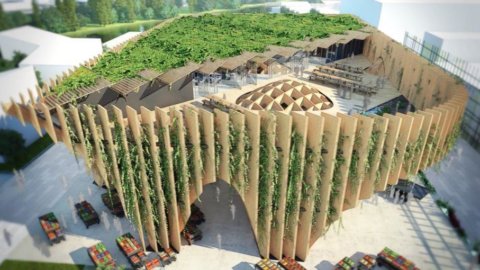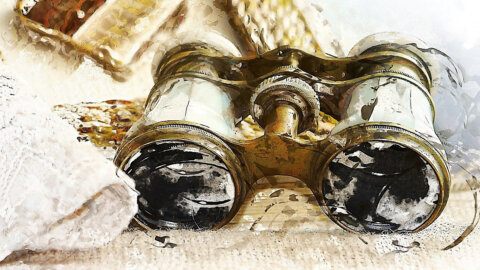26 days to go inauguration of Expo 2015 in Milan dedicated to the theme "Feeding the Planet, Energy for Life" (May 1st - October 31st). 53 countries will be present with their own pavilions, a little less than 100 others will be hosted in the nine thematic clusters which we will discuss in one of the next episodes.
We remember that last February 19 we outlined the general profile of this extraordinary event. On March 6st with Accenture, on March 11th with Enel and FCA-CHN, on March 16th with Intesa San Paolo and on March XNUMXth with Tim, Finmeccanica and Samsung, we presented the contributions, essential to the success of the event, which are offering the eight official global partners of Expo 2015. On March 21, we illustrated the conspicuous Chinese presence: in addition to the official pavilion, China is in fact also present with three Corporate spaces. On March 31st we illustrated the other Corporate spaces: Federalimentare, Kip International School, New Holland Agriculture, and Coca Cola.
Today we start with the France the virtual visit to the main pavilions of the host countries of Expo. The theme chosen by Paris for its participation is “Producing and feeding differently”. The communication is based on four pillars: the contribution to world food production, thanks to the potential of the French productive fabric; the development of new food models capable of responding to the need to produce healthy, safe food for all; the improvement of the self-sufficiency of developing countries with a policy of transfer of skills and technologies; the alliance of quantity with quality in all areas, sanitary, nutritional, culinary.
La France presents at the Universal Exhibition 2015 in Milan the whole recognized range of its exclusive characteristics. from land management skills to agriculture, which allow its brands to be present on all world markets.
The pavilion is made of laminated wood and covers an area of 3.600 square meters. The design was inspired by a symbol of French food culture: the covered market. The CMC company of Ravenna (Cooperativa Muratori & Cementisti) carried out the project by the X-TU studio (Anouk Legendre and Nicolas Desmazière) with the support of the ALN Atelien Architecture studio (Nicola Martinoli and Luca Varesi) and the Adeline Rispal studio, which he oversaw the scenographic design of the pavilion.
Given the temporary nature of the pavilion, a lightweight construction was chosen, with a wooden structure produced by the French firm Simonin, which can be dismantled and reused following the end of the Exhibition. Particular attention was paid to the reduction of energy consumption, waste recycling and purification.
Inside, the Chefs Café, a boutique of French excellence and a bakery. Areas with spectacular scenery covering approximately 1.100 square meters are dedicated to the four pillars of communication. According to the dedicated website, 1.000 visitors per hour are expected, as well as 5.000 official delegations. In total, the public investment, divided among the 7 ministries involved, was 20 million euros.
May 1st. for the official opening of the French Pavilion, the Café des Chefs will gather the greatest Chefs, winners of the Bocuse d'or. They will take place every three weeks and will present a menu that will promote the dishes of French cuisine interpreted by gastrostar such as François Adamski, Yannick Alléno, Fabrice Desvignes, Jacky Freon, Michel Roth, Thibaut Ruggeri, Serge Vieira, Philippe Mille, Franck Putelat. These great Chefs will be accompanied by young hotel school students who are not yet famous, but who have already demonstrated their skills in transforming simple foods on the daily menu into gastronomic masterpieces.
The event is part of the Gout de France/Good France initiative, presented on 19 March in Milan by Laurent Fabius, Minister for Foreign Affairs and International Development of France. We remember that the “French-style” meal has been recognized as an intangible world heritage by UNESCO. 1.300 restaurateurs from 5 continents are participating in the initiative.
Making the meal a unique and accessible experience is the mission proposed by GL eventi, the agency that will manage the Chefs' Café throughout the exhibition period. A real challenge, like the restaurant open from 11 to 22 which will welcome more than 1000 customers a day for a signature meal at the restaurant or for fast food that is always available.
The catering offer of the French Pavilion aims to combine culinary excellence with affordable prices. The restaurant manager wanted to focus on know-how French in this field with the aim of allowing the numerous visitors to have access to the highest levels of haute cuisine through tasting dishes that enhance the production of the different terroirs and the different agri-food chains.
Contrary to what many think, gastronomy Made in France it also concerns simple products, but of high quality, and is made up of recipes that are good for every day and can, like luxury dishes, contribute to food education and the culture of taste.
The tradition linked to French cuisine is a richness and a particularity. It is no coincidence if France boasts one of the lowest obesity rates in the world. The French eat in a balanced way and this is largely due to the tradition of sharing meals around the table at precise times. A practice that the French Pavilion will promote throughout the period of the Exhibition, inviting the whole world to discover, get to know and recognize French lunches.
But a French menu is not complete without a good bottle of wine. The highest wooden arch of the transalpine Pavillon will be made up of 1.600 bottles with Denomination of Origin (CNIV) representative of the entire country. Indeed, wine is one of the most characteristic elements of France's heritage, culture and landscapes. And wine, naturally, will be the protagonist of the menus of the restaurant hosted inside the Pavilion, while in the agricultural field around the Pavilion there will be vineyards.





